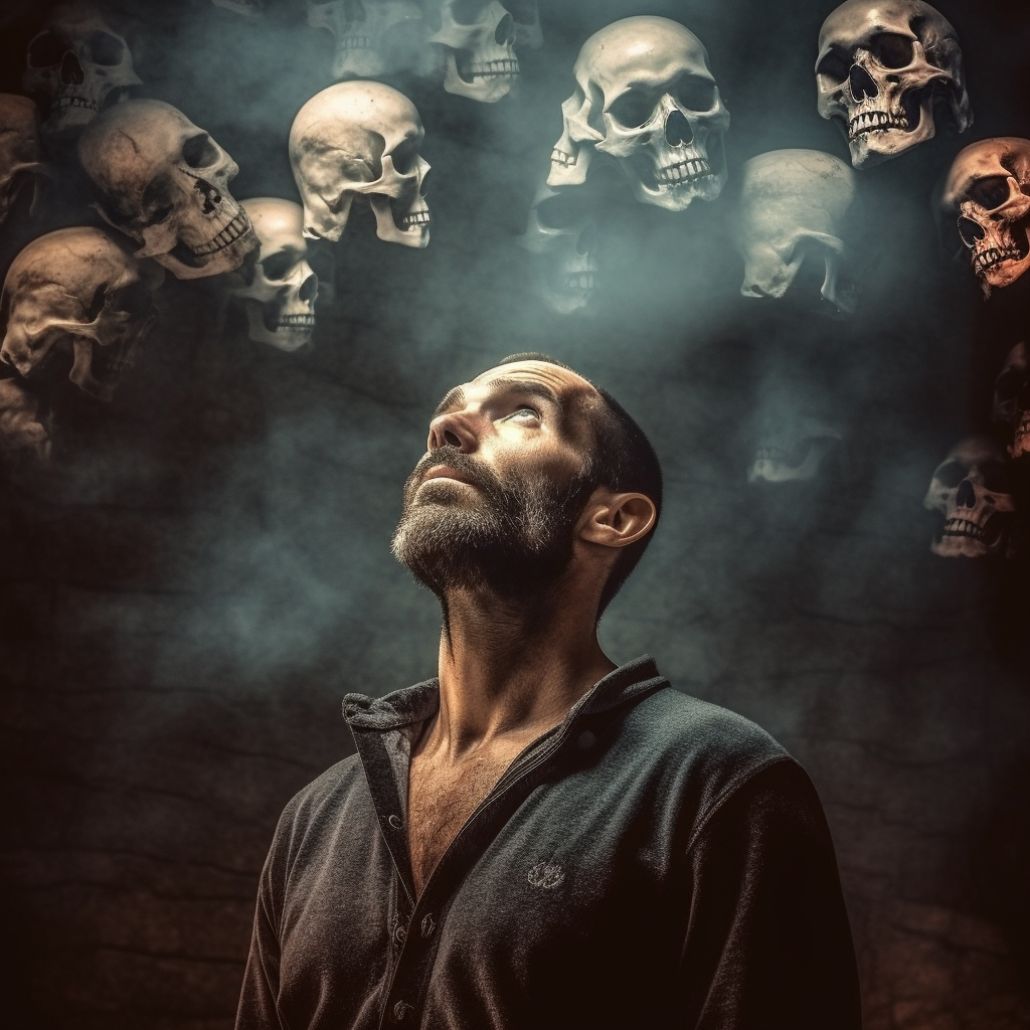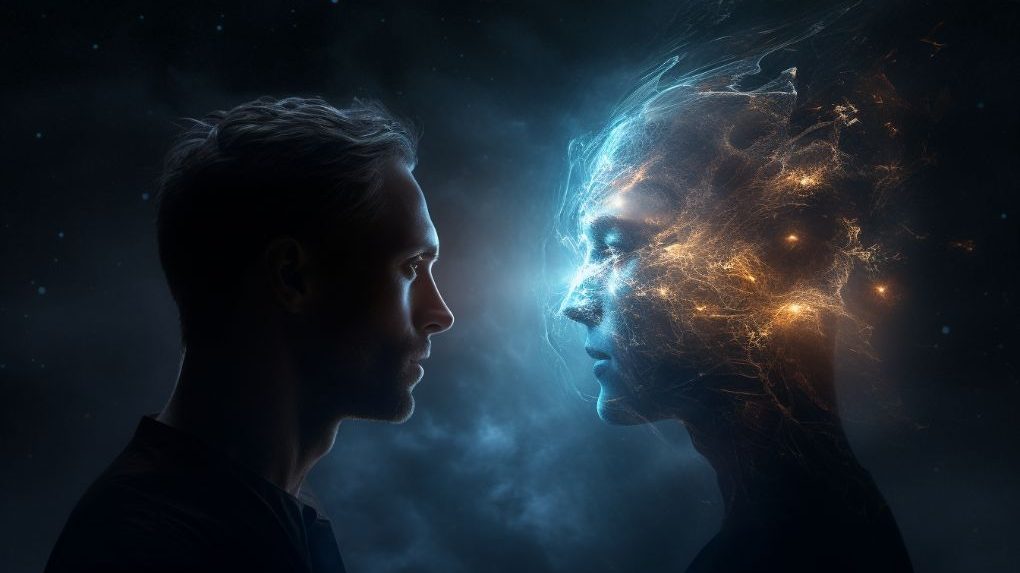Death, an inescapable fate, is shrouded in mysteries, misconceptions, and morbid fascinations. From unexpected causes to ancient rituals, our understanding of the end is both eerie and intriguing.
Dive into the shadowy realms of mortality as we unravel some of the creepiest truths about our ultimate destination. Curious? Read on and satiate your morbid curiosity.
Creepy Facts About Death
The Leading Causes of Death Worldwide
Each year, millions of people die around the globe. But do you know what’s responsible for most of these deaths? Heart disease consistently tops the list as a leading cause, claiming numerous lives.
Young people might think they’re invincible, but the truth is that car accidents are another prominent cause of death among this age group. Surprisingly, despite their menacing reputation, shark attacks claim fewer lives than one might think.
The Last Sense to Go
There’s an eerie truth about our senses when we approach the end of life. As our body begins shutting down, our senses fade away one by one. But the last sense to depart?
Hearing. That’s right; the dying person might still hear you even when they can’t respond. This serves as a poignant reminder to always convey love and comfort to those nearing the end.
The Enigmatic Mysteries Surrounding Our Demise
Millions of people meet their inevitable end every year, and with each death comes a cascade of biological processes and curious facts. While many believe the average human body stops all functions immediately after death, there are phenomena that might surprise even the most seasoned experts.
Forensic scientists can tell a lot about how and when someone died based on the state of a dead body. For instance, contrary to popular myth, our nails and hair don’t continue to grow after death. Instead, as the body’s skin dehydrates and recedes, it gives the illusion that nails and hair are longer.
Another fascinating fact is related to our senses. While many assume all senses fade away simultaneously, it’s believed that hearing is the last sense to go. That’s right, even in the stillness of a room with a person on the cusp of death, their last connection to the living world might be through sound.
It’s a stark reminder that despite the vast knowledge we’ve amassed about death worldwide, there’s still a veil of mystery surrounding it. From the young to those in old age, the creepy facts about death never cease to captivate our imagination and fuel our quest for understanding.
Rigor Mortis and the Stiffening of the Dead
After a person dies, their body undergoes various changes. One of the most well-known is rigor mortis, a process where the body becomes stiff. It starts roughly three hours post-mortem and peaks around the 12-hour mark. This happens because the muscles contract and lock in place, but why does this occur? It’s due to the depletion of ATP, the energy currency of cells, causing muscle fibers to lock up.
Don't miss Where Do We Go After We Die? Theories on the Afterlife and Soul
Dead Bodies: An Intricate Process
Dead Bodies Swell and Decompose
Ever wonder why bodies bloat after death? This swelling is primarily due to the gases produced as the body decomposes. As creepy as it sounds, our body is a host to various bacteria. When we die, these bacteria feast on our tissues, producing gases that cause the body to inflate. This is often a critical clue for forensic scientists pinpointing the time of death.
Corpse Wax: An Eerie Afterlife Transformation
As the body decays, there’s a phase where the fatty tissues transform into a waxy substance called “adipocere” or commonly known as corpse wax. This substance can encapsulate the body, somewhat preserving it and giving it a stone-like appearance.
While not all bodies go through this transformation, under specific conditions like moisture and lack of air, corpse wax can form, adding an unexpected twist to the decomposition journey.
Self Mummification: An Ancient and Extreme Practice
This practice is not for the faint-hearted. In ancient times, especially in regions of Asia, certain monks aimed to mummify themselves while still alive, believing it brought them closer to enlightenment. They’d follow a stringent diet, essentially starving themselves and consuming specific tree barks and seeds.
Over time, their body fat would deplete, and after their death, their body would remain preserved, testament to their spiritual journey.
What Happens When a Person Dies
The Immediate Changes in the Body
As soon as a person dies, their body starts to undergo several changes. Within minutes, the body starts cooling from its average human body temperature to the surrounding environment’s temperature—a phenomenon forensic scientists refer to as “algor mortis.” At the same time, without the heart pumping blood, gravity pulls blood to the body’s lowest points, causing a purplish-red discoloration called “livor mortis.”
Walking Corpse Syndrome: Thinking You’re Dead
Also known as Cotard’s Syndrome, this rare mental disorder makes people believe they’re dead. Yep, you read that right. Affected individuals genuinely think they have died or lost parts of their body. This syndrome, while not related to actual death, reminds us of the intricacies and mysteries of the human mind and its perception of life and death.
Blood Pressure and Heart Disease: Silent Killers
It’s no surprise that heart disease is a leading cause of death. But did you know that uncontrolled high blood pressure is a significant risk factor for it? It silently damages the heart over time, leading to fatal heart attacks. It’s referred to as a “silent killer” because many people don’t realize they have it until it’s too late.
Related: The Journey of the Dead – Can Someone Who Has Died Still See Us?
How Forensic Scientists Can Tell the Story
Blood, Skin, and the Signs of a Dead Body
Forensic scientists possess an intricate understanding of post-mortem changes. For instance, the patterns of livor mortis can reveal if a body has been moved after death. Furthermore, the skin, which might appear blistered and loose after a few days, can also offer insights into the time and cause of death.
Amino Acids Ornithine: Tracing the Moment of Death
A lesser-known fact: when a person dies, the level of amino acids ornithine and putrescine in their body fluids surge. By analyzing these levels, forensic scientists can often estimate the time of death more accurately, providing crucial information in criminal investigations.
The Unusual Science of Messy Handwriting
This might sound peculiar, but handwriting can sometimes hint at impending death. As people near their end, especially due to diseases affecting the nervous system, their handwriting can become shaky and messy, making it harder to decipher.
Bizarre and Unexpected Death Facts
Vending Machines Kill More Than Sharks
Believe it or not, you’re more likely to be killed by a vending machine than a shark! Every year, there are reports of people shaking vending machines out of frustration, leading the machine to tip over and cause fatal injuries. In comparison, shark attacks, while highly publicized, result in fewer deaths.
The Deadliest Battle in Human History
Throughout human history, wars and battles have led to innumerable deaths. The Battle of Stalingrad during World War II stands as one of the deadliest. It’s estimated that the death toll reached a staggering 2 million, highlighting the devastating consequences of human conflict.
Sky Burial: Using the Dead as Trail Markers
In the high mountains of Tibet, traditional burials are impractical due to the rocky terrain. Instead, the Tibetan Buddhists practice “sky burials,” where bodies are left exposed to the elements and scavenging birds. This not only returns the body to nature but also serves as a spiritual act of generosity.
Also read Death And What Comes After – Exploring The Great Unknown Beyond Our World
The Oddities and Realities Surrounding Death
The Sciences Institute’s Revelations on Aging
The renowned Sciences Institute has published intriguing findings on the process of aging. One might think heart disease or accidents are the prime culprits behind deaths, but often, old age itself is a formidable foe. As cells degrade over time, a living person becomes more susceptible to diseases, leading to the inevitable.
When Death Climbs to High Altitudes: Mount Everest
Mount Everest, the world’s highest peak, stands as a testament to both human endurance and the grim reality of death. Many mountaineers have faced their end on this towering giant. Shockingly, due to the extreme conditions and the challenges of retrieval, the remains of some climbers are left behind, serving as haunting trail markers for those who dare to ascend.
Deaths Occur in the Most Unexpected Places
Did you know that some of the most surprising deaths occur in seemingly harmless settings? For instance, countless tales tell of people who’ve unexpectedly met their end while pursuing a health tonic or remedy. In Ancient China, the pursuit of immortality often led emperors to consume concoctions that, ironically, caused their premature deaths.
The Tragic Circumstances of a Dead Child
One of the most heart-wrenching situations is when a child dies. These tragedies, often unexpected, leave families grappling with a profound sense of loss. While the circumstances can range from diseases to accidents, the pain of losing a young life remains immeasurable.
The Journey of Cremated Remains
Many cultures opt for cremation, transforming the physical body into ashes. These cremated remains are then often kept in urns, scattered in meaningful places, or turned into jewelry. In some traditions, the ashes are used in ceremonies to honor the dead, ensuring that even in death, the individual remains a part of the lives of their loved ones.
The Enigma of a Body That Dies Inside
A mysterious phenomenon, sometimes a person’s body begins the process of dying even while they still exhibit signs of life. Whether due to certain diseases or traumas, it’s as if the body has given up, yet the spirit lingers. These cases, while rare, offer a poignant reminder of the fragile balance between life and death.
The Societal Evolution: From Dead People to Memorials
Over time, the way societies handle and remember their dead has evolved. In ancient civilizations, the deceased were sometimes buried beneath homes or in community tombs. Today, with advancements in burial practices and societal shifts, dead people are commemorated with intricate gravestones, expansive memorial parks, and digital tributes.
Misconceptions and Traditions Around Death
Buried Alive: Popular Belief or Reality?
One of the most chilling fears in human history is the dread of being buried alive. While many stories circulate about this horrifying fate, it was a more tangible fear in the past. Before medical science could accurately determine death, there were instances where the “dead” woke up in their coffins. This fear led to the invention of “safety coffins” in the 19th century, equipped with air tubes and bells – just in case!
Dia de Los Muertos: Celebrating the Dead Loved
Far from the spooky atmosphere of Halloween, Dia de Los Muertos is a vibrant celebration honoring the deceased. Originating from Mexico, this tradition melds ancient Aztec rituals with Catholicism. Families create colorful altars, offer marigolds, and prepare special foods to celebrate the lives of those who’ve passed, proving that death can be as much about celebration as mourning.
Grave Robbers and Ancient Egyptian Traditions
Ancient Egyptians went to great lengths to ensure their dead were well-taken care of in the afterlife. They built intricate tombs filled with treasures for the deceased’s journey.
However, this opulence attracted grave robbers, leading the Egyptians to develop curses and complex security measures to protect their tombs. Some believe the infamous curse of the pharaohs, which spells doom for those who disturb royal resting places, originated from this very concern.
Concluding Thoughts on Mortality
Death is a universal truth we all confront. But the way we perceive, react, and engage with it varies widely across cultures, time periods, and individual beliefs. From the factual to the bizarre, the study of death provides a mirror into the human psyche, our deepest fears, and our most profound hopes.
It reminds us to cherish every moment, to find beauty in endings as much as beginnings, and to continuously seek knowledge, understanding, and compassion. After all, in the wise words of a popular saying: “Death is not the opposite of life, but a part of it.”



